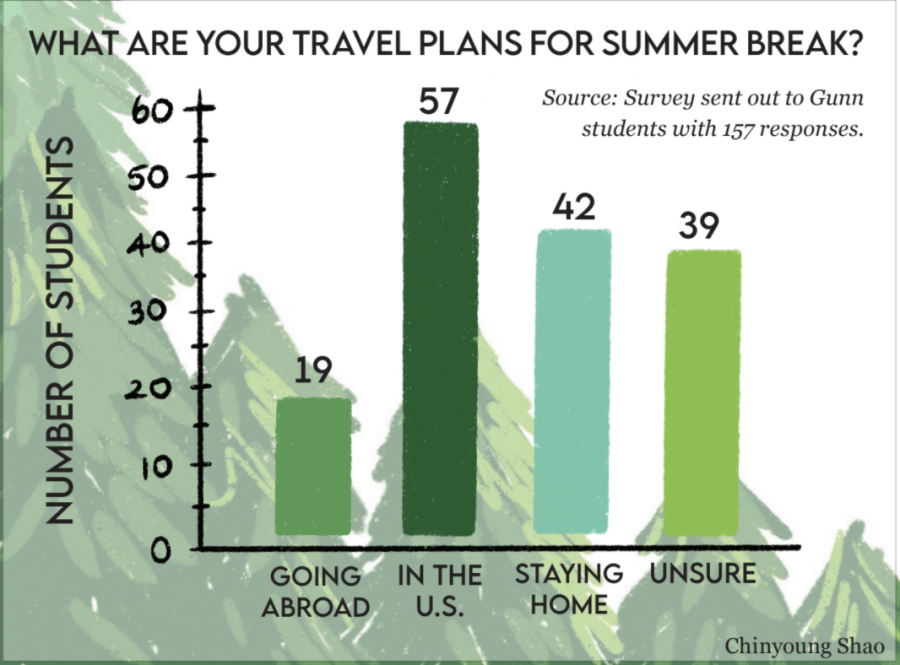Are we out of the woods: Vaccination and the future of the pandemic
On March 11, during his first Prime-Time address, President Biden announced his intentions to bring the nation closer to normal by July 4. Despite that goal, many doctors believe that we are far from seeing the last of COVID-19. With this in mind, are we really out of the woods when it comes to the pandemic?
Since the beginning of 2021, COVID-19 vaccines in the U.S. have become increasingly available; soon, virtually anyone over the age of 12 will be able to receive a dose. According to the Centers for Disease Control and Prevention (CDC), as of May, 46% of the U.S. population has received one dose, and 35% is fully vaccinated. However, since mid-April, these vaccination rates have been on the decline. Dr. Dean Winslow, a Stanford professor of medicine, infectious disease specialist and CDC senior advisor, commented on the current vaccine rollout. “It’s going to take at least 75% to maybe even 85% of our population to be immune from COVID-19, either by natural infection or by vaccination, in order for the transmission to significantly die down,” he said. “[Since] something like 30% or more of the population in the U.S. is going to refuse the vaccine, it’s going to be somewhat problematic to get there.”
Even if the U.S. reaches over 85% immunization, many countries still lack the proper medical infrastructure to control COVID-19 cases and vaccinate populations. As a result, the virus is projected to remain in circulation for many years to come. “COVID-19 may end up being like the flu,” Winslow said. “Since the virus does mutate somewhat and adapts itself to become more transmissible, we may have to have a booster shot just like the flu shot each year.”
Despite that, the vaccine has provided significant aid in combating COVID-19. Following its implementation in the U.S., the number of cases significantly decreased, leading to relaxed restrictions. California, for example, is pushing for a full reopening of its economy by June 15. “If California is able to fully reopen, then schools are slated to open as well,” Assistant Principal Leonel Argumedo said.
Reopening has further enabled flexibility when it comes to traveling over the summer; in a survey conducted by The Oracle, 36% of Gunn students surveyed plan on traveling within the country, and 12% plan on traveling internationally. “This summer, traveling is a possibility,” junior Ella Koehler, who is traveling internationally this summer, said. “Like so many others, we have been confined to our houses for most of the year. The thirst for travel is greater than usual.”
Since international travel is one of the primary ways COVID-19 spreads and case numbers remain elevated in many countries, doctors have strongly encouraged Americans to take precautions while traveling. The Health Officer and Director for the Santa Clara County Public Health Department, Dr. Sara Cody, explained the county’s current stance on traveling. “International travel remains particularly risky, and we strongly urge anyone returning from an area with high COVID-19 case levels to quarantine upon return and get tested,”she wrote in an email.
The Santa Clara Public Health website has reported the presence of several variants throughout the county. Although current vaccines have provided some protection against these variants, their increasing presence in many communities adds to the concerns many have for the future.
Currently, the Santa Clara County Public Health Department’s reaction has been to closely monitor variant appearances and continue under the current safety protocols. “The county and other providers do sequence select specimens for variants and conduct contract tracing to determine whether they derive from community spread or from travel,” Cody wrote in an email.
As we inch closer towards a new normal, we are reminded that COVID-19 will still be present—although hopefully less widespread—for years to come. While no one can predict the future of this pandemic, Winslow reminds us that we can still work together as a society and take the proper measures to help de-escalate it. “We are going to get closer to normal, but we really can’t let our guard down,” he said.
Your donation will support the student journalists of Henry M. Gunn High School. Your contribution will allow us to purchase equipment and cover our annual website hosting costs.

On staff since August 2020, Senior Raphael Semeria is a managing editor for The Oracle. When he is not scrambling to contact sources, he can be found at...


